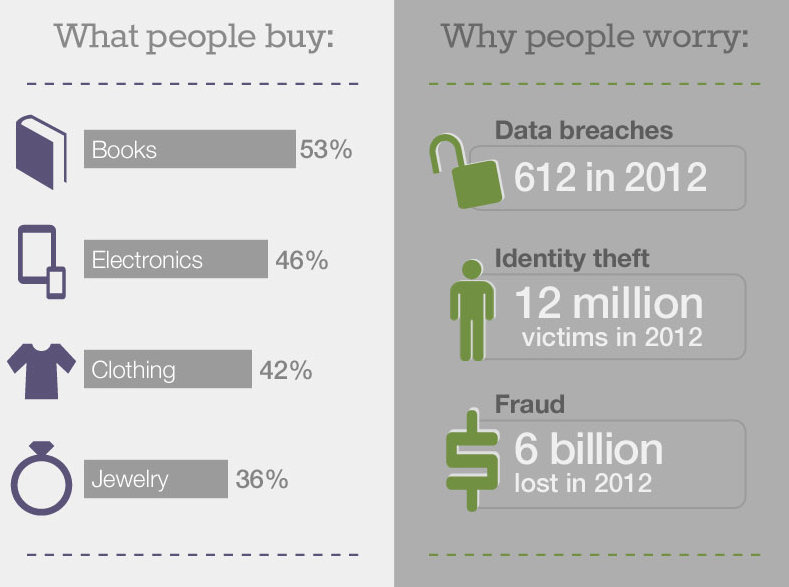Online Theft and Other Frauds: What to Look Out For, and How to Handle it

It’s a sad fact, but a hard truth that you have to set aside a certain part of your budget to account for the fraudulent activities that will inevitably occur in the rocess of conducting ecommerce business. While it’s certainly unavoidable that 2% of the population will always steal, it’s no excuse for you not to put up as many barriers to their villainy as possible. To that end, here is the Ashop blog’s comprehensive guide to identifying and preventing the many incarnations of online theft.
Commonplace Types of Online Fraud
To begin with you need to understand the many different methods employed by the fraudulent that can be used against your online store. Here’s a simple list of the most common types of online fraud:
- Intellectual Property Theft- Whenever dealing with online media, it’s easy to have your work stolen. Bloggers are infamous for grabbing content and not giving credit where it’s due. This can be a problem if someone starts duplicating your content, and confuses the search engine bots.
- Identity Theft- The theft of personal information stored online is a big problem. Many people have large quantities of data stored online, and all it takes is one leak for all those important number to be taken by a nasty internet ne’er do well. Once in possession of someone’s social security number, name, address, birthday, bank account number, or what have you they’ll make illegal and fraudulent online purchases with impunity.Luckily, your online store can’t be held accountable for these lost funds. The victim’s Credit Card Company or bank insures these losses.
- Phishing-The online equivalent to a panhandling con artist. One that picks your pocket and empties your bank account. Phishing is when an email or website requests information, particularly your credit card and account numbers, or even passwords. Once you’ve unwittingly provided your info to a site you thought was safe, the phisherman then robs you blind. Make sure to ask the bank to confirm any account numbers associated with messages that you might suspect are Phishing scams
- Pagejacking- This is when those wacky hackers use their techno magic to co-opt part of your site to their own purposes. What they do is break into the backend of your site and take a bit of your source code. Then they use this to redirect some of your site’s traffic to their own duplicate site, which may contain offensive or harmful material embedded within. Imagine if your customer clicked on one of your product pages and got a face full of furry cosplay. That’s one less customer for you, and one more example of asinine trolling. You can only stop this kind of fraud once you’ve discovered it’s going on, which is unfortunate. So keep on the lookout for drastic changes in site traffic from day to day.
- Advance Fee Scamming- This is the oldest trick in the eBook, but it still gets the unsuspecting and the gullible with equally malevolent ruthlessness. This is a particularly reprehensible crime because it appeals to the needy and hopeful. It’s an offer for a large sum of money or goods that is promised to come after you’ve paid an initial fee, usually described as a transfer or legal stipend of some sort. To avoid being the victim of an advance fee scam all you have to do is be aware and vigilant.
- Bad check scams- One thing that hasn’t changed about the crime of fraud as it’s translated into the virtual realm, is the threat of a bad check. A clever fake can fool most people, and by the time the bank confirms its illegitimacy, your scammer has already left town with your goods, and you end up eating the loss. If a customer wants to pay by check, be wary of their intentions and do some thorough checking before accepting payment. One easy way to cover your bases against bad checks is by rejecting any checks for large amounts.
- Fake money orders- The thieves that can accomplish this task are pretty committed. Pulling off a fake money order scheme successfully is one of the more difficult fraudulent activities a scammer could undertake. This is because the funds transfer is handled by the bank. Banks are old hats at spotting fraud, and are better equipped than most online stores to prevent any fraudulent damages.It still occasionally happens though, so be wary of money orders from high risk areas like eastern Europe, the Middle East, or the poorer parts of Asia.
- Wire transfer fraud- Bank to bank wire transfers are probably the safest form of payment. Transfers from cash offices are a little bit shadier. It’s best to avoid them completely, but be especially suspicious if it’s requested. Wire transfer fraud is a common form of money laundering, and while you won’t suffer any losses, you might get into trouble for aiding and abetting the crime.

There are many different ways of catching online theft before it happens. Security codes for example, are among the most basic measures in place to determine a credit card’s validity. These are the 3 digit CSV codes on the back of credit cards. Ask your customers to confirm these numbers in your online order form. If their number doesn’t match the one recorded by the bank or the creditor, then don’t accept the payment.
You should also look out for any order with expedited shipping. Expedited shipping can be a sign of oncoming fraud. Give any orders that are especially large another once over before approving them when expedited shipping is in play. It can also be evidence of a stolen credit card. Thieves are often trying to get the goods before anyone can cancel the card. If they get their goods shipped before you can shut down the payment, you’ll have to add another check into the L column.
A good way of differentiating legitimate expedited shipping from online shopping fraud is by keeping track of the ratio between the order value and shipping cost. If it’s stolen money, then the criminal isn’t as likely to care much about relatively inexpensive shipping for a high dollar item(s).
Another way to hedge your bets against fraudulent activity is through customer engagement. Just like engagement builds a customer’s trust in your brand, communication with a customer should reassure you that they aren’t up to anything sketchy. If a customer responds to your emails, there’s a much lower chance of the order being fraudulent. Keep in mind that if they don’t answer, it doesn’t necessarily mean you should call the cops though. We all know how difficult it can be to get your customers to open our emails. Still, chalk it up as another warning sign and something to look out for.
If at all possible, try to determine location of the order. Where was the order
placed? There are free IP address geographic location programs and software suites that you can incorporate into an online order form. If you can’t find the location that way, then check the billing and shipping address. If these two don’t match, that’s another red flag. Data thieves aren’t likely to ship to the billing address and try to intercept the mailman.
You can also use an online service such as anywho.com or whitepages.org to find out if the address matches the other information requested on your order form. Again, in this scenario be very careful of orders from high risk locations. Asia, Africa, Easter Europe, and the Middle East are high risk spots for online shopping fraud.
One more question you should always ask when dealing with a possible case of fraud: What kind of email account does this user have? When scrutinizing customer email addresses, it’s smart to be on the lookout for certain warning signs. If the domain is .edu, .k12, or .mil, then it’s highly suspect. These public websites are often exploited for their anonymity. There are also plenty of shady email services that you probably will never have heard of, these are willing to service scammers and be a willfully ignorant party to their ongoing schemes.
How to Prevent Online Shopping Fraud
Spotting a fraud in action is good, but what’ you really want is to stop it before it starts. Online shopping fraud is no joke, combatting it seriously take a serious commitment, one of both time and resources. If you have an online store of considerable size, it’s imperative that you employ a highly skilled team of individuals with a single prime directive: to detect and prevent fraud. If you can do that the rest of these measures should be gravy, mainly because you won’t be the one doing all the work.
If however, you don’t have the resources to pull together a fraud team, you’ll have to pull double duty and read on. Don’t try to see this as a disposable cost though. A fraud team is extremely necessary, because of the vast section of the population looking for an opportunity to be dishonest.
Another good idea is to closely monitor chargebacks. For those who don’t know, chargebacks are basically a grown up version of take-sies back-sies. Before funds are transferred the cardholder issues a withdrawal request. In a case of fraud, these cardholders will have already received their goods. They can do this with expedited shipping, as we’ve already discussed; or if you have especially slow shipping, it could be possible. Try to keep track of any chargebacks that come through. Being able to match the transactions with order information will help you cut down on fraud in the future.
There are also numerous dependable software suites available that will act as an effective filter for the majority of fraudulent activities your site is likely to encounter. This is a popular genre for programming because of the high demand, and ever evolving nature of online theft. Shop around for different options. There are also free tools for fraud prevention offered by creditors, Visa and MasterCard.
AVS or Address Verification Systems can be instrumental in determining fraudster location, and should always be included as a necessary part of your checkout process. It allows you to cross reference the information a customer provides you with the information filed by their banks or credit card companies. This is how you determine the differences between shipping and billing addresses like we mentioned earlier.
Though online shopping fraud is an ever-present and pervasive crime that can never be truly eliminated, if you follow these guidelines and remain vigilant, you can cut down on your lost revenues to a significant degree.














Comment(s)0